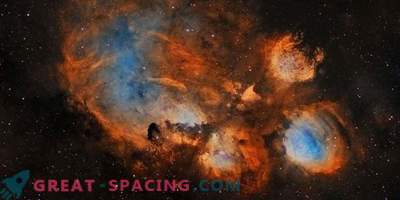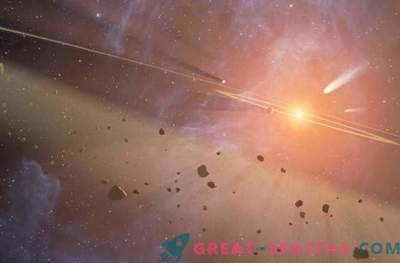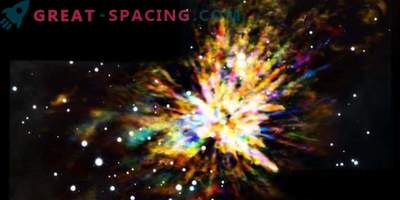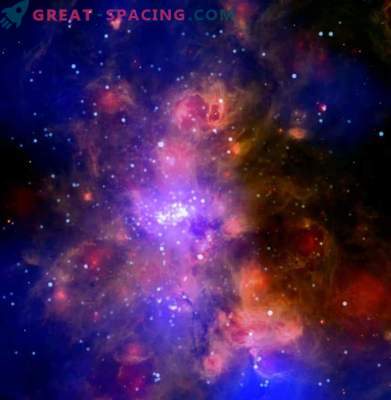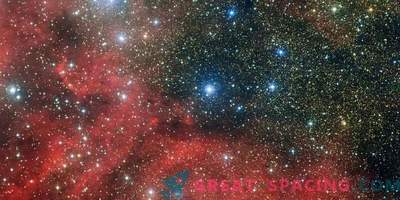
ALMA observed the solar stars at an early stage of their formation, and found traces of methyl isocyanate. It helps to understand the details of creating our system. The picture shows the region in which it was found. Insert - the molecular structure of a chemical
Two groups of scientists used the power of the Atakam millimeter-range large lattice (ALMA) to search for methyl isocyanate in IRAS 16293-2422.
ALMA allowed scientists to view the molecule at different wavelengths on the radio frequency spectrum. They revealed exceptional footprints located in the warm and dense inner regions of the dust and gas clouds in which young stars live. The results were analyzed in computer simulation and laboratory experiments to determine the origin of the molecule. IRAS 16293-2422 - a multiple system with young stars. Removed 400 light years away. The analysis showed that all stars are surrounded by methyl isocyanate gas.
Celestial bodies in our system emerged from material left over from the formation period (4.5 billion years ago). Therefore, the study of protostars belonging to the solar type, helps to look into the past and look at the conditions in which the world familiar to us originated.
Laboratory experiments show that methyl isocyanate can be obtained from ice particles in extremely cold conditions (as in interstellar space).

